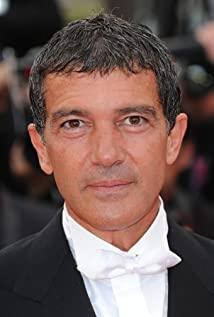Speaking of vampires, what is its image in your mind?
It wears a black cloak that blends with the night, and it goes out at night, and the most talked about, apart from its handsome appearance, is probably the years of "eternal life".
And "Interview with the Vampire", adapted from the novel of the same name by American writer Anne Rice, has created the most handsome and elegant vampire in history for us.
Audiences who have seen the movie will probably be amazed by the vampire costumes of Tom Cruise and Brad Pitt. Under the classical and gorgeous costumes, they reproduce the elegant style of the aristocratic class. However, there is a kind of irony hidden here: the brighter the appearance, the more unpredictable and terrifying human nature may be, and even - they are not human.
The film uses this "noble power man" attitude to interpret the image of the executioner who is ruthless and bloody - it not only presents the figurative image of the "alternative" creature, the vampire, harming human beings, but also expresses the implication that the powerful can arbitrarily deprive the lives of the lower classes. .
At the same time, under the contrast of luxury life, we can taste the empty life of Louis, Lesta and Claudia more clearly - vampires seem to dominate human beings, but they can only enjoy meaningless glitz, they can't In-depth communication with human beings fails to build intimacy and maintain relationships.
They seem to be indifferent to these unspoken problems, but they deeply affect their thoughts and lives. "Eternal life" is too long, and their missing desires can only be made up for by shifting to other areas, thereby indulging their sins or desires.
So while understanding vampires, we also need to know the following 3 points, which can help us deeply understand the theme of "Interview with the Vampire".
1. Background: "Vampires" were born under the plague, and the plague originated from humans
Legends about vampires can be traced back thousands of years to Mesopotamian civilization, ancient Hebrew civilization and ancient Roman civilization, who were the incarnation of the devil at that time.
The specific image of vampires is made up of folklore originating in Eastern Europe: people "resurrection" after death, crawling out of the grave to suck blood.
Especially in Europe in the 14th century, when the Black Death was raging, people were in an extremely frightened living environment, thinking that God had abandoned them, and at the same time, they were afraid that the people who died of the Black Death could be "resurrected". And when people can't explain the disaster caused by the Black Death, they need to find a "scapegoat", so that they have something substantial to hold their uneasy emotions, so the legend about "Nitat" came into being - They are vampires in Germany and the spreaders of the Black Death.
But in fact, it was because the medical treatment at that time was underdeveloped, and some patients were forcibly buried in shock or not really dead. Later, when the patients woke up and climbed out, they were regarded as "resurrection" and superstitious as "immortal bodies". .
In the 18th century, it could be called the golden age of "vampires". Because the plague broke out again in 1710, the authorities created many appalling incidents in order to eliminate the panic of the people. Many people even believed that the plague was caused by vampires. As a result, people in many regions are convinced of the existence of vampires, which has lasted for hundreds of years.
The Black Death in "Interview with the Vampire", although not based on the plague of the 14th century, introduces the protagonist "Louis" at the beginning. He was the owner of a large farm in southern New Orleans in 1791. Many Black slaves work on his plantation, and there is a port near the estate. This setting combines history - there were plagues in the 16th to 19th centuries, and a large number of black slaves were trafficked to the Americas, mostly transported into the United States.
At that time, many black slaves died of the plague during transportation. In addition to directly sinking into the sea, the bodies of the sick and deceased were buried in the port after arriving at the port (in response to the above-mentioned, after some people who were not dead were buried, they were buried in the cemetery.” Resurrected). This explains why the Black Death broke out where Louis was, and logically sets the stage for his later encounter with Claudia in the Black Death area.
Legends give the "vampire" a unique drama: it was born in a plague brewed by humans, and in order to survive, it feeds on human blood.
It went from a fictional legend to a culture of superstition and then to the fascinating characters it is today.
In the past 100 years, through the creation of literature, movies and popular culture of different eras, different versions of "vampires" have gradually been unified, forming today "relying on blood-sucking for a living, acting only at night, with supernatural abilities and handsome appearance, full of aristocratic charm" vampire image.
2. Character orientation: 3 vampires with "self-destructive tendencies"
The vampire in the movie has two meanings: one is a metaphor for the oppression and exploitation of black slaves by slave owners, which is just a passing sense; the other is to directly refer to the existence of the "alien" species of vampires, and deeply explore the dilemma faced by "heterogeneous"—— Even with all the glory and immortality, vampires cannot be free and happy.
The vampire Lesta transformed Louis, and since then, their "love and kill" has never stopped, until Claudia's appearance, her crazy revenge, ruthlessly broke the illusion of harmony between the three, And revealed that they each have a tendency to self-destruct - sometimes restrained, sometimes unbridled.
01. Lesta
Lesta, who is indulgent to the point of madness, treats "transforming people into vampires" as a fun, so how can he have a tendency to "self-destruct"? But in fact, he has been running wildly on the road to death.
Lesta's self-destructive behavior is mainly reflected in the transformation of Louis and Claudia into two vampires. My conclusion is based, because these two "companions" are obviously not the same as Lesta from their thoughts to their behaviors - which is destined to be Lesta's "uncontrollable" variables.
Louis is kind and cowardly, hesitant and persistent, and his remaining humanity and kindness are contrary to Lesta. And Claudia is too indulgent and freewheeling, and as time goes by, Claudia especially hates her "unchanged" appearance, which she blames on Lesta, which is what she does to Les Tower pain under the killer's fuse.
Louis disapproved of him, Claudia disobeyed him, didn't Lestat notice the slightest? As a senior vampire, Lesta is obviously the hottest one, but he deliberately ignores or condone, frantically testing on the brink of danger.
When Lesta transformed them, it was probably just for entertainment or to find a company. He wanted to have some fun in the boring "eternal life", but he never thought that the two dying people he saved ended up "killing" him together. .
02. Louis
From a psychological analysis of Louis, his character has a "romantic" side: even if his family is rich, his attention still falls to the unsatisfactory part of his life, his feelings are melancholy and there are great ups and downs, and sometimes he even expresses himself. Destructive tendencies.
After the death of his wife and children, he has been in this state - tearful, sentimental, indecisive, compassionate and passive. He lived himself as a protagonist in a tragedy, wantonly exposed his sorrowful emotions, and his words and deeds were full of drama. For example, he deliberately provoked the other party when he was playing cards, and wanted the other party to kill him; even after killing the maid out of control, he set fire to the house himself. .
This kind of romantic character cannot be satisfied by material life, so Louis yearns for "another world". He believes that only death can satisfy his hope , but when he is really dying, he relents and asks Lesta Save yourself and become a vampire in confusion.
But as a vampire, he didn't want to suck human blood, but in order to survive, he had to choose the blood of small animals - reducing damage within a controllable range.
But the more depressed, the greater the rebound, so he quickly lost control and also embarked on the road of sucking human blood.
03. Claudia
Although Claudia was just a little girl when she became a vampire, she also had a tendency to self-destruct, and her self-destructive mood stemmed from "can't get it" - she not only could not have family and love, but also lost the right to be a woman .
After becoming a vampire, her appearance has remained the same for decades: the face and body of a child, but the soul of a mature woman is imprisoned.
The characteristics of a vampire deprived her of the right to choose a partner and have love. Without a choice, she gradually added "ambiguity" to her reliance on Louis, projecting her desire for love onto Louis.
But many factors such as identity, physiology, and emotion bound them, so in addition to being ambiguous, the two are actually more dependent on each other.
But when Louis meets another vampire, Amon, she realizes that Louis may have to leave her. At that moment, her self-destructive tendencies escalated - in addition to her desire to have a woman's body, she also longed to have a mother. Since the former cannot be obtained, the latter must be achieved by Louis for her.
She found a "mother" for herself, begged Louis to transform him into a vampire, and then accompany her instead of Louis.
Of course, she wasn't really willing to let Louis leave, so while achieving her wish, she also wanted to test Louis's intentions for her. Even if it was known that the result was not what she thought, she still couldn't help but abuse herself.
3. Fuhua Dao: Matching with vampire identity, rational use of elements such as elegance, luxury and horror
"Interview with the Vampire" won the 21st Saturn Awards for Best Horror Movie, Best Costume and Best Makeup. It can be seen that as a horror movie, its costumes are very good.
The film's picture is like a dark oil painting, creating a classical romantic, extravagant and gorgeous atmosphere; while the use of horror elements is full of drama: such as a lot of blood plasma and vampire's sharp canine teeth, especially the pale complexion and exposed vampire's face. Blue veins, obviously this kind of appearance is strange and terrifying, but human beings just turn a blind eye to it.
In terms of lighting, the picture is deliberately dim. First, vampires are afraid of light, and second, it is conducive to creating a terrifying and dark atmosphere. For example, when Louis saw Lesta in his hometown, Lesta, who looked like a mummy, has been hiding in the shadows. , a terrible face loomed in the darkness.
In addition, the movie has two scene scheduling that inspires me, and it is also a bonus performance by the actors:
One is that soon after Louis became a vampire, Lesta recruited 2 prostitutes to drink and have fun, trying to lure Louis to kill and suck blood, but Louis avoided the whole process, and his body language was full of resistance, so Lesta was angered by the anger. The table (at this moment, a terrifying little climax suddenly appeared), because it was not the table top that was overturned, but the coffin lid - the empty coffin appeared impressively
Before the lid was lifted, the camera only shot the side of the coffin, and there were tablecloths, red wine and food as cover, so that the audience could relax their vigilance and immerse themselves in the extravagant picture. Until Lestat suddenly lifts the lid, the camera is shot from above, the terrifying color of the coffin, as well as the panicked expression and begging of the prostitute, instantly subverts the audio-visual experience into a terrifying atmosphere.
Another is that Claudia brutally "murdered" Lesta: she tricked Lesta to drink "dead blood" that was not good for vampires. When he was exhausted, I thought it was time for Louis to take over. , Claudia took a short blade and smeared Lesta's neck quickly and accurately, and the blood immediately sprayed all over the ground; and when Louis arrived late, I thought he would choose to save the kindhearted Lesta, unexpectedly, he chose to help Claudia "destruction".
In this passage, Claudia, who horribly and directly portrays the appearance of an angel, actually has a vicious and cunning side, and at the same time it also shows Louis' indulgence and intimacy with her, as well as his inner desire to get rid of Lesta.
Summary, human beings do not understand the meaning of "eternal life"
In addition to excellently creating a creepy atmosphere, the film also beautifully portrays the emotional entanglement of the three vampires Lesta, Louis and Claudia - sometimes obscure, sometimes crazy.
Perhaps the identity of vampires makes them not need to be bound by morality like humans, but such indulgence must go against reality, so that they cannot be accepted by society, and "eternal life" is only accompanied by loneliness.
Therefore, "Interview with the Vampire" focuses on the journey of a normal person to find a sense of belonging and social identity after becoming a vampire: Louis is unhappy - the remaining human nature and the bloodthirsty nature of vampires have been at war in his heart; he is a human being When he lived as a walking dead and became a vampire, he was also incompatible with the same kind, so "eternal life" became his curse.
In order to dig deeper into Louie's emotional level, the film uses flashback memories: let Louie tell strangers about his fantastic life, at the expense of exposing his inner loneliness, vulnerability, sadness and even fear - but unfortunately humans cannot understand his pain And emptiness, only the desire and greed for "eternal life" are fed back to him.
However, even if disappointed again and again, Louis still insists on finding a sense of social identity, or more precisely, finding the meaning of his "live" in the long years.
View more about Interview with the Vampire: The Vampire Chronicles reviews











